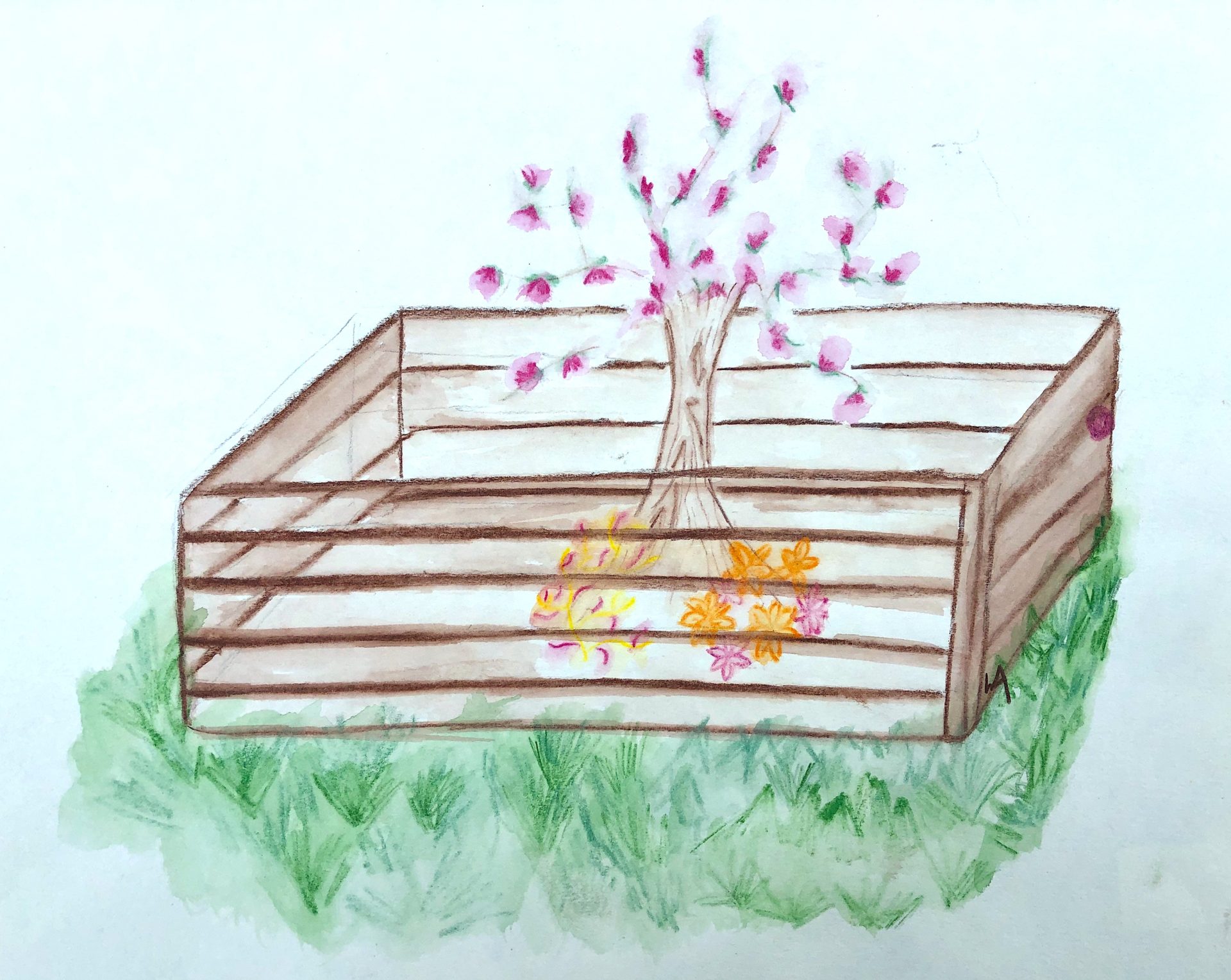Finding the Pain
clapped in church on Sunday morning
Grandma’s hands,
played a tambourine so well.
Grandma’s hands
used to issue out a warning,
She’d say “Billy don’t you run so fast,
might fall on a piece of glass
Might be snakes there in that grass”
Grandma’s hands.”
Site, Onset, Character, Radiation, Associations, Timing, Exacerbations, Severity.
I found the theme of what is unseen by doctors fascinating in this week’s session. The patient artwork* with the tree flowering below ground, the rich tapestry covered by the curtain of depression, the speck of blue amongst the tumult of colours…
You feel as if your being taught to see more in lectures, to make new connections and think of the many possibilities to reach the diagnosis but perhaps this is not the case, perhaps I see less now. Again one of the patient artworks brought this home to me – when they drew what they wanted from a doctor, they drew a hand. When I see a patient and I look at their hands I’m looking for clubbing, I’m checking for capillary refill time, nicotine stains and any other clinical clues – I’m not looking for personality and reassurance and comfort like patients are when they have a doctor examine them or even shake their hand. This reminded me of a song I used to love which sees the story of a person’s life written in their hands. Maybe we as doctors should see more like this, I’m so taken up with lists of questions to ask and signs to look for that when I see a patient I doubt I see with the kind of penetrating eyes that the patients drew for doctors, that could see what was left unsaid, the flowers in the tree roots so to speak. A new mnemonic:
Sight, Openness, Care, Rapport, Attention, Time, Empathy, Silence…
*To see further patient examples of the artworks which inspired the above reflection visit Messages to our Future Doctors in the ‘Patient-Perspectives’ category of this website.

The art. The poem. The reflection. Everything I love about this piece of art boils down to the narrative the artist is trying to portray: the importance of looking beyond clinical signs and symptoms when examining a patient. My interpretation of this beautiful work is to look deep within, find the ROOTS of a patients’ visit, by looking at them as a fellow human. This requires you to open your eyes, heart, and mind. Eyes: sight (to see them as a whole individual). Heart: openness (to listen without judgement or a preconceived notion), care and empathy (professional curiosity and willingness to understand their experiences and feelings), rapport (use your human skills, connect and build understanding). Mind: Attention and time (putting aside our own subjective thoughts, feelings, and concerns to provide focused and compassionate care), and silence (Giving time to process and reflect on given information and identify any questions or concerns).